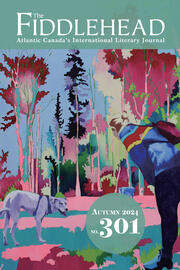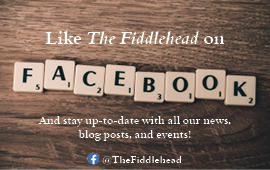By Kendra Guidolin
For four years, I studied two separate degrees: creative writing and dance. You can imagine the reactions I would receive as a double fine arts major, and the amount of questions I was asked about the combination of the two. But over the years of studying both, I noticed an overwhelming amount of connections between dance and literature. At the risk of sounding like a cliché stenciled on a wall found on Pinterest, dance is a universal language. From its most primal roots as a means of communication and storytelling to the emergence of the first classical ballet, dance has been a medium through which literature is both preserved and reinterpreted. Only in working tirelessly on a translation of Francis Ponge’s poem “Soap” did I find exactly how similar the process is from translating a text to dance and vice versa. Like Ponge’s original French text, ballet is a language that differs greatly from spoken or written English; sometimes the language limits the direct word for word translation and instead demands an interpretation of the original.
Although there are certain movements in ballet that do have a defined translation, known as classical ballet mime, not dissimilar to American Sign Language, the vast majority of translation in ballets happens through the expression and presentation of the characters, and the dynamics between those on stage and off. And while more often than not, the producer will offer a brief synopsis of each act in the program to add to the audience’s experience of the production, dance is largely to be considered in the act of the performance itself; its dancers, choreography, costume, set design, and often musical score do the vast majority of the “talking.”
From some of the greatest Shakespeare plays like Romeo and Juliet and A Midsummer Night’s Dream, to takes on literary classics like Anna Karenina and Eugene Onegin, dance has been taking over the literary world. More and more, contemporary ballet choreographers are delving into literary texts to interpret and reimagine words for the stage.
Although many productions have been passed down through ballet masters who teach the choreography to other companies to continue performing the original work, there are still contemporary choreographers, such as Christopher Wheeldon, who continue to translate texts into ballet today. Depending on the approach the choreographer wants to take with the text, they may start choreographing and have a composer create the score based on the movement, or they may create collaboratively with the composer. As in theatre, a choreographer may choose to interpret a text literally and translate each act or chapter, or to illustrate the essence of the text in movement quality and emotion. Take for example The Royal Ballet’s production of Shakespeare’s The Winter’s Tale:
Christopher Wheeldon and Joby Talbot’s take on The Winter’s Tale is both informed by the text and the ways in which each collaborator interprets the most vital aspects that are represented in costume, set, and musical and choreographic narrative. In both Wheeldon and fellow British choreographer Liam Scarlett’s works, the text acts as a blueprint dictating the narrative arch, characters, and themes. Contrastingly, other choreographers such as Cathy Marston use texts as inspiration for movement and emotional drive, creating a more interpretive and loose adaptation on classics like Jane Eyre.
Like the translation poem or any form of interpretative art, such as erasure poetry, dance faces the same accusations of plagiarism, but it’s the refurbishing of literature into fresh, modern interpretations that is keeping the text alive in a contemporary setting. For example, Frankenstein, recently picked up by Scarlett for the San Francisco Ballet, has now been recreated into a stage production. The ballet portrays Victor Frankenstein’s creature as it was originally envisioned by Shelley, rather than the depiction that has been assumed and constantly remodelled by media. Instead of perpetuating the stale stereotype of the clumpy-shoed green giant with bolts in his neck, the ballet shows the character, a male dancer in an all nude, patchy costume stitched together, who moves in fluid, contemporary balletic style, contrasting the classical repertoire that the rest of the cast performs en point and in partners. The creature in its own style, separate from society, performs its otherness to the audience the same way it does in the novel: through speeches and literary devices. By reintroducing the initial intentions of Shelley’s novel, the ballet becomes a more closely-linked translation than a piece loosely inspired by the text, as various satiric and comedic interpretations in film and theatre are. In doing so, the ballet acts against the tropes and caricatures perpetuated by popular culture to refocus the context back into its original. That is to say, the act of reworking a text into a ballet involves the same thoughtful intention as erasure or translation poetry because of the way dance, being an art without text, points at its textual origin.
With that said, like poetry or literature, a dance can be translated in many ways — some far from the author’s intention for the text. Sometimes this works favorably for audiences, and sometimes not as much. Of course, the best choreographers will decide to maintain or stray away from the original context of the literary piece with artistic purpose.
Although dance— particularly ballet— can often be less accessible to the general public because of its price-point, and because performances are usually limited to larger cities, it can also translate literature in a way that appeals to a wider audience because body language is universal. While dance and literature may not immediately seem to be similar in their purpose and form, I believe that the two art forms working in tandem emphasize the importance of the other; it is important to keep dance alive because it keeps alive classical literature, and vice versa.
Having studied both creative writing and performing arts in her undergraduate degree, Kendra Guidolin is a budding writer and freelance dance artist. The Toronto native is currently working on her master's degree in creative writing at the University of New Brunswick.











Add new comment